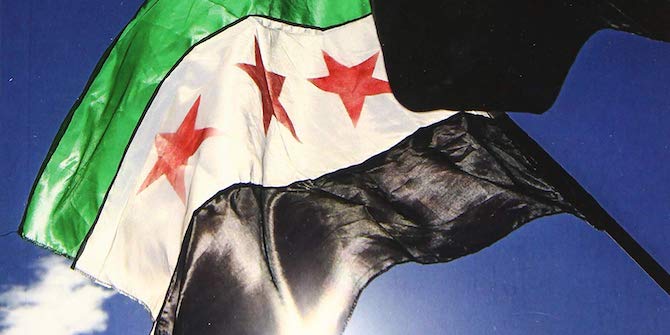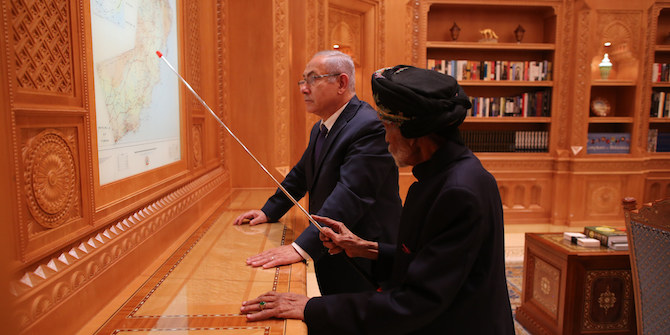by Courtney Freer
Raphaël Lefèvre’s skilfully written and meticulously researched Jihad in the City traces the development of Harakat al-Tawhid al-Islami (Tawhid) in Tripoli in the early 1980s. The book makes a substantial historical contribution by uncovering the role of a largely understudied group that established an Islamic emirate in the city of Tripoli in Lebanon between 1982–1985. In addition, Lefèvre contributes to theoretical debates about the role of ideology in Islamist mobilisation, writing about a ‘spectrum of ideological commitment,’ which is helpful to understanding Islamists and to disentangling notions of Islamist groups either being homogeneously ideological or pragmatic.
He also engages with the importance of place and locality in the mobilisation of Islamist groups and contentious groups more broadly, focusing particularly on Tripoli as a place of lost glory, previously linked to Syria and in competition with Beirut after it was integrated into the French Mandate of Lebanon in the 1920s. The decision to detach Tripoli from Syria was seen as an ‘attack on the city’ (52), which helps to explain its long-held reputation as a rebel city and the rise of militant Islam within it.
Lefèvre’s book, written over the course of seven years of trips to Tripoli, showcases his extensive archival research and includes material from many interviews, demonstrating an admirable commitment to revealing the importance of place in the story of the development of Tawhid. Indeed, Lefèvre coins the phrase ‘neighborhood Islamism’ to note the importance of local concerns in Tripoli and the importance of the city itself as a space in which contentious politics were likely to emerge. Indeed, decades before the rise of Tawhid, Bab al-Tebbaneh had housed ‘revolutionary Marxists and rebels of all stripes,’ securing its status as Tripoli’s ‘stronghold of contention’ (89). By situating the rise of Tawhid solidly within the space of Tripoli, Lefèvre demonstrates ‘the ways in which social, rebel and terrorist movements can use the physical, symbolic and social dimensions of space to root themselves in some localities’ (153). He also shows the mechanisms through which former Marxists turned to Islamism over time due to the appeal of these ideologies as ‘protest ideologies’ (154) while recognising the importance of ‘ideological entrepreneurs’ in using ideology to mobilise support.
Lefèvre further notes throughout the book that the role of ideology in contentious politics is not homogeneous across a single group, an important observation that debunks a great deal of existing scholarship about whether ideology or pragmatism drives Islamists. As Lefèvre explains, ‘Tawhid’s case therefore shows the need to go beyond the assumption of ideology’s influence over movements and, instead, to grasp the mechanisms through which it affects their behavior’ (472). He also describes the ways in which Tawhid featured a broad ‘spectrum of ideological commitment’ (472), with a small number of ‘ideological entrepreneurs’ serving as the main ideologues producing and promoting Tawhid’s materials as the group grew.
Tawhid, in addition to having an ideological message, also explicitly engaged with the space in which it operated, in particular focusing on local concerns of the poor (306). As a result, Lefèvre highlights that there was a spectrum of ideological commitment, with members drawn to the group for a variety of reasons, rather than uniformly motivated by ideology as is often presumed. Tawhid also engaged in ideologically driven violence for a variety of reasons, undermining the notion that ‘religious violence’ is always strictly driven by ideology.
And for as much as Lefèvre situates Tawhid within its local context, he also assesses its relationships across borders, adding to the limited scholarship on Islamist groups’ foreign policies. In so doing, he traces how relations with Fatah and Iran became less ideological and more transactional over time, reflecting the ways in which differing levels of ideological commitment within an organisation can drive its policies (413).
Lefèvre describes the eventual crackdown on Tripoli and demise of Tawhid through Syrian repression as a means of ‘spatial repression,’ which effectively reduced the ability of group mobilisation. Indeed, this crackdown effectively converted Tripoli’s ‘stronghold of contention’ into a ‘repressed space’ where the costs of mobilisation were too high for Tawhid members (468).
Most importantly, in my view, Lefèvre points out that Tawhid could be at once distinctly Tripolitan as well as committed to a jihadist ideology and could include members who joined the group for a variety of reasons. As he explains,
What it truly gave rise to was a “neighborhood Islamism” more guided by local concerns and solidarities than ideology. Similarly, as the movement was prepared to embody “subaltern Islamism” in order to court Tripoli’s urban poor by providing a conduit for their socio-political revolt, they dragged it into a “social jihad” which was as, if not more, driven by older social tensions than ideology. And finally, Tawhid drew on criminal networks and practices, which allowed it to vastly increase its resources but simultaneously turned it into a vehicle for “Islamo-gangsterism,” or a type of behavior systematically prioritizing economic gains over ideological consistency. (16)
While many scholars have seen these as mutually exclusive, Lefèvre using the case study of Tawhid demonstrates the extent to which different motivations for Islamist mobilisation can and often do coexist.
Jihad in the City is an important contribution to the history of Tripoli and of Lebanon more broadly, as well as a substantial theoretical work that will inform future scholarship related to Islamism and contentious politics in the Middle East for years to come.







